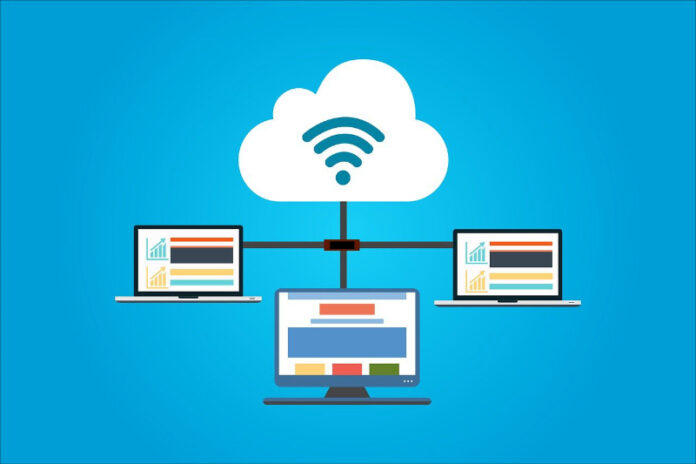Without a doubt, the world is running on mobile apps. From news consumption on social media channels to food deliveries and executing a bank transaction, people have been relying on the convenience brought by modern applications.
For enterprises, this means that their apps must be fast, secure, and most importantly, always available. This is especially true in Malaysia, where organisations are beset with several challenges in their app modernisation journey.
To tap on potential solutions, senior IT executives gathered for a roundtable titled “Fast, Secure, Available —Next-Gen Enterprise Applications,” organised by Jicara Media, and hosted by Red Hat and F5.
Labour pains
In the healthcare sector, every initiative, whether it is the digitisation of patient records or the creation of a mobile app for telemedicine services, should ultimately aim to improve the patient experience.
This is exactly what a private healthcare provider is aiming for, as it continues to modernise its systems and applications, shared its chief digital and technology officer.
“I’m always undoing some of the stuff that’s been done before, because healthcare is quite unique. The value stream that everyone touches within the group should be about improving patient care, so we need to be prepared to reduce the administrative burden, for example,” the technology officer said.
Part of reducing the burden of administrative tasks on hospital staff is looking at areas that can be outsourced to third-party service providers, said the technology executive. They also noted that the healthcare provider is currently halfway through its cloud modernisation journey, and cyberthreats loom in the background at every step of the way.
“Healthcare is the third most hacked industry in the world and is the fastest growing one for all the wrong reasons. It’s almost every other week that you will hear some hospital being hacked. So this is a huge challenge in terms of readiness,” the technology officer remarked.
Meanwhile, for a public hospital in Kuala Lumpur, regulatory approval for cloud projects involves more scrutiny, while the institution’s data is still on-premises. However, a proposal to adopt a hybrid cloud approach has already been sent to the appropriate authorities for consideration.
As per the public hospital’s health IT manager, the approach of keeping systems on-premises rather than using cloud services is driven by the need to ensure 24/7 availability and minimise service maintenance.
Another challenge for healthcare institutions is the time spent on familiarising doctors and nurses with every new app or system that is being introduced.
“Some hospitals may take about three to four years to fully educate doctors to use the electronic medical records system,” the hospital’s health IT manager explained.
Banking on innovation
For Zaidee Ismail, Director of Technology Services, Bank Islam Malaysia, the emergence of all-digital banks is putting pressure on traditional banks like theirs.
“It’s given us time to think that if we don’t change, then our customers will seek other options. Instead of viewing it as a competition, we’re focused on finding ways to better serve our customers,” he said.
At present, Bank Islam Malaysia’s legacy systems are still housed on-prem, while also maintaining a cloud-based core banking system for its digital bank.
As one of the most highly regulated institutions, banks are often walking on eggshells when it comes to deploying a new technology, especially if it involves customers’ personal data.

Zaidee admits that getting a project approved by Bank Negara Malaysia can be quite a challenge. To this end, he called on third-party providers for more assistance in terms of regulatory affairs.
“The kind of conversations that we have with technology partners has reached a certain level of maturity. It’s no longer about selling a box or solution, but helping us to go through the process of getting the approvals, understanding that I might need to sell, and translating how your solution actually affects us from a regulatory point of view. Having that kind of script or template helps a lot with our processes,” the executive shared.
Ultimately, the biggest challenge for banks is managing the risk, in light of rising cybercrimes targeting financial institutions, Zaidee said.
“This is data privacy we’re talking about. The last thing that we want is that we’ve been scrutinised because of a loophole that we have in our data centres, or in whatever deployment that we take. We really have to be careful,” he noted.
Cloud nine
Thanks to cloud technology, businesses can have the flexibility to deploy their applications, move their systems around, and choose which setup is best for them — either public cloud, private cloud, multi-cloud, or hybrid cloud.
One such enterprise that has taken advantage of what cloud has to offer is Sunway. According to Tiew Keh Chyn, its Head of IT Infrastructure Solutioning, their cloud journey is in support of their current investments in areas such as robotics process automation and smart cities.
“We started from on-premises, moved to our private cloud, and now we’re moving into the public cloud. Our objective is to achieve a hybrid cloud in the end, enabling app modernisation at the infrastructure layer,” he said.
Indeed, the popularity of multi-cloud and hybrid cloud deployment has empowered organisations with their app modernisation and digital transformation initiatives, echoed Tammy Tan, Country Manager, Malaysia, Red Hat.
The fascinating aspect, as Tan pointed out, is that businesses no longer need to start from scratch.
“You can actually pivot and change, and do different things at different stages in your strategy, because your business may change, the bosses may change, and the technology partner may change. So to have that agility is very important,” she said.
With containerisation platforms like OpenShift and Kubernetes now available, scalability of applications has become possible to meet growing customer demands, according to Lim Mei Lin, Country Manager of F5 Malaysia.
“We all have that passion to have a better digital life, to manage mobile apps better. We’re all here to improve the digital experience,” she said.
Despite the abundance of technologies available, the challenge remains in overcoming the talent crunch for IT professionals in Malaysia. Companies such as Red Hat and F5 are tackling this issue by investing in partnerships with academic institutions to ensure that the next generation will have enough skilled workers to support the industry.
It is a very long cycle, Red Hat’s Tammy Tan acknowledged, but the enterprise sector has to start somewhere.
















